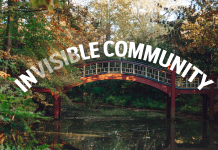With its beaches, mountains and movie stars, Southern California is a hot place to be. This past month, the region has been on fire.
A wave of wildfires has swept through the area, with two new blazes reported just this week. Oct. 27, five firefighters were killed outside of Palm Springs in an arson fire that also destroyed more than 30 homes, the Associated Press reported. Ironically, the fires coincided with a convention of the Association for Fire Ecology meeting in San Diego, and the release of a recent study criticizing the forest thinning practices that have been the cornerstone of the government’s fire management plan.
p. Forest thinning — cutting down smaller, under-story trees — aims to prevent the kind of high intensity crown fires like those in California. President George W. Bush’s Healthy Forest Initiatives plan is essentially a thinning management plan. The problem is that thinning without controlled burning of tree remains creates fuel for uncontrolled fires, according to the Nov. 14 online edition of the New York Times.
p. In a recent study published in the Canadian Journal of Forestry Research that followed a 2002 Oregon wildfire, 80 to 100 percent of the trees in the area that were managed only by thinning died, compared with a mere 5 percent tree mortality rate in the area that had been thinned and burned. Another recent Forest Service study reported a 50 percent tree loss in an unmanaged region of a 2002 Colorado fire, but 90 percent loss in the area that had been thinned.
p. Thinning as a stand-alone prevention measure is dangerous because it leaves a lot of biomass on the forest floor as a fuel layer and creates small gaps in the canopy that allow for explosive growth of under-story shrubs and grasses — more fuel, in other words. With an open canopy, the forest floor becomes drier as well, and more susceptible to fire. Without a prescribed burn to clear out the thinning debris, the procedure has only increased the fuel load available for the next blaze.
p. “We need fire on the ground,” said Dr. Ronald H. Wakimoto, a professor of forestry at the University of Montana. “The only thing that stops fires is previous fire or prescribed fire.”
p. Unfortunately, prescribed fires can be not only an expensive management practice, but also a dangerous one. If a controlled burn grows out of control, it can threaten homes and lives.
“If they don’t treat the fuels on the ground, the fire will get to the homes faster,” Wakimoto said. New policies will be needed to manage fires if we are entering a drier climate period in the Western United States, as many fire ecologists and climatologists suggest. This explains why management practices that might have worked in the past are now struggling. Even when enormous flames are not jumping through the canopy, low, hot ground fires can move and damage quickly, calling for national attention to create a better fire management policy than the 2003 Healthy Forest Restoration Act.
p. On a more positive note, scientists at the San Diego conference presented research on ecosystem recovery from the 2003 Cedar Blaze, the largest fire in Southern California’s history.
“Recovery seems to be good regardless of how severe the fire was,” Jon Keeley of the U.S. Geological Survey’s Western Ecological Research Center said. Regrowth of trees and shrubs is occurring, and some birds and small mammals have moved back to the region. Scientists are still concerned about the invasion of exotic species to the fragile habitat, especially colonizers like grasses that could provide a fuel source to another fire. Native species, like the formerly dominant pines, have not been seen in the primary re-growth, a puzzling observation for San Diego State University biologist Janet Franklin, who presented the research.




























